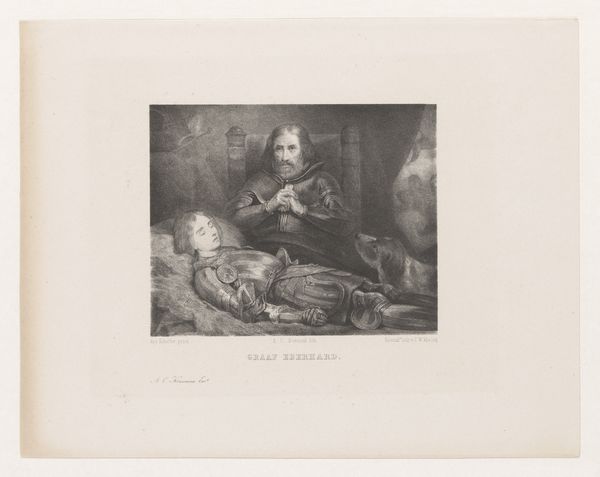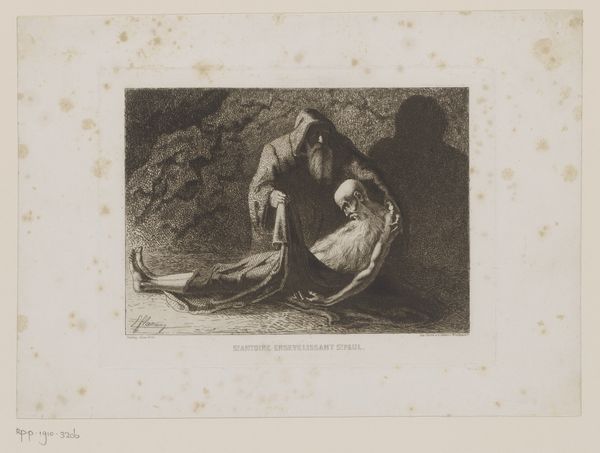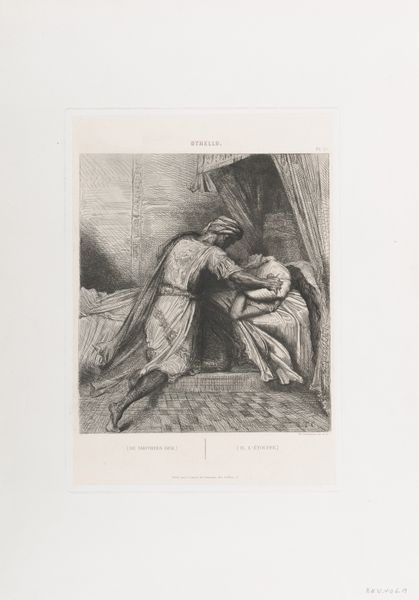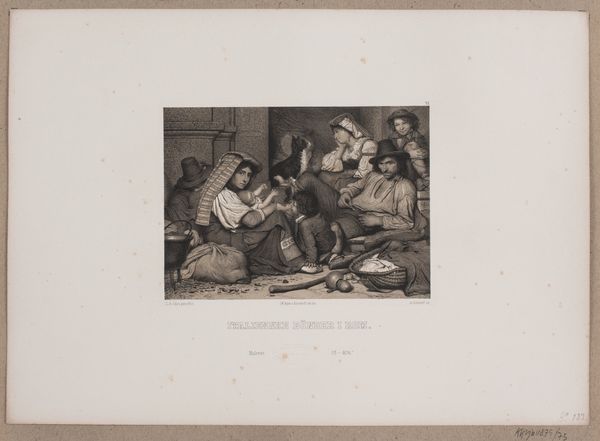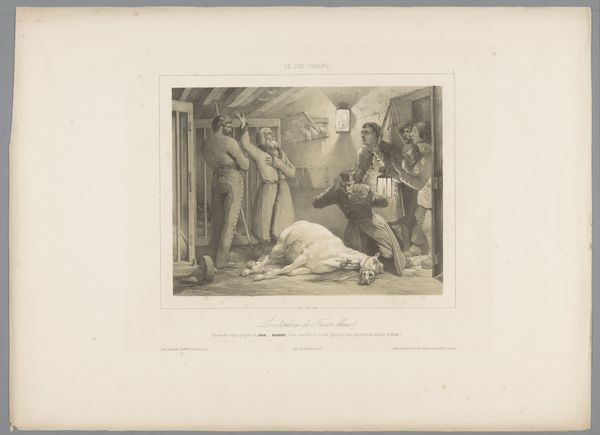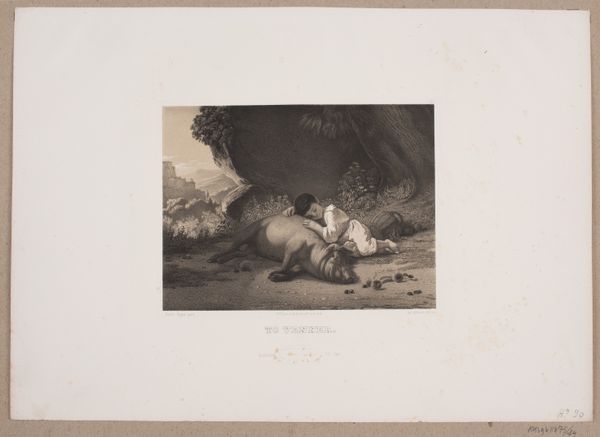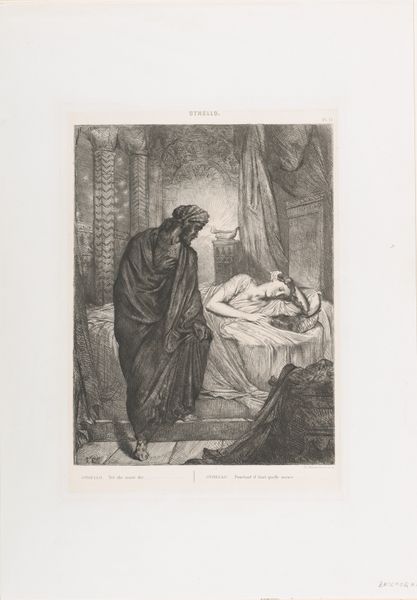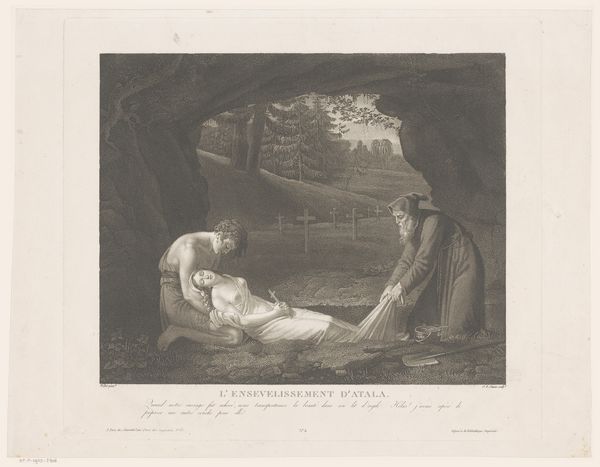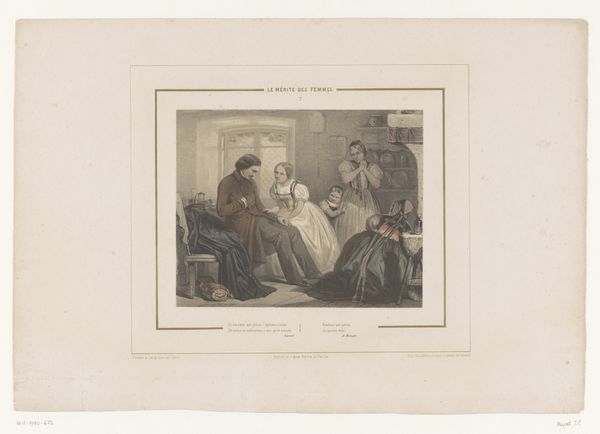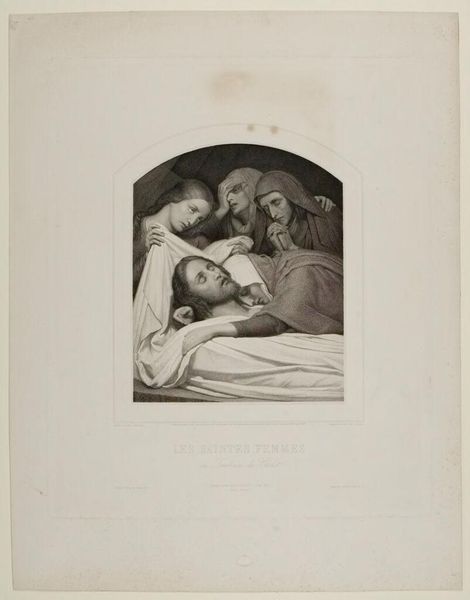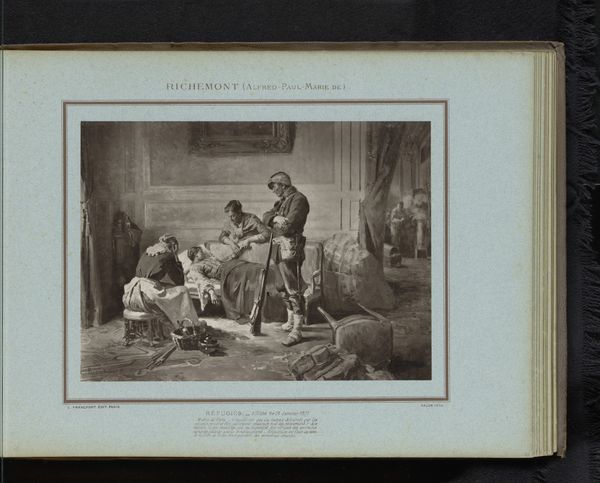
drawing, lithograph, print
#
drawing
#
lithograph
# print
#
landscape
#
figuration
Dimensions: 284 mm (height) x 400 mm (width) (billedmaal)
Curator: What strikes me first about this lithograph, "Valdemar Sejer med sin søn i fangeskab", dating from the 1880s, is the profound sense of weariness emanating from it. There's a tangible stillness, a muted quality despite the implied narrative of imprisonment. Editor: The visual economy of this work is stunning. The arch framing the scene focuses all the emotional weight. One figure is chained while the other appears as though they have collapsed from exhaustion onto the straw. What are your impressions of its symbolism? Curator: Considering the historical context, Valdemar Sejer was a Danish nobleman. This print could be referencing historical accounts of imprisonment, but more deeply, it touches upon universal symbols of powerlessness and vulnerability. The sleeping figure of the son evokes innocence and dependence, sharply contrasting with the father's weary watchfulness. The son is clearly his responsibility. It makes the historical content universally emotionally accessible. Editor: Absolutely. This piece reminds me how lithography served as a powerful medium for disseminating historical narratives and social commentary. Think about who would purchase and display such a work? It's an intimate yet public declaration of a noble’s plight. The shadow suggests not a dungeon but potentially an emotional and political abyss for an imprisoned individual. Curator: Indeed. Also, there is the chain – it is not a particularly heavy shackle, almost as if it is more representative of being trapped more metaphorically by circumstances rather than literally chained to the earth. It serves as a potent emblem for broader injustices but it isn’t graphic and shocking as the sole emblem of oppression. Editor: Looking at this print, I'm drawn to think about how effectively artists employed accessible images of authority overthrown and innocence oppressed to move hearts. Works like this were absolutely instrumental in affecting popular opinions and even possibly igniting public dissent at that moment. It humanizes authority figures in a way that is emotionally disruptive. Curator: And it highlights how we continue to be captured and held hostage to power, no matter our perceived positions or advantages. It brings those questions up and lingers on my mind. Editor: Precisely. "Valdemar Sejer med sin søn i fangeskab" speaks across time, engaging us to reflect on humanity’s continuing dance with dominance and injustice, made poignantly evident through familial bond.
Comments
No comments
Be the first to comment and join the conversation on the ultimate creative platform.
